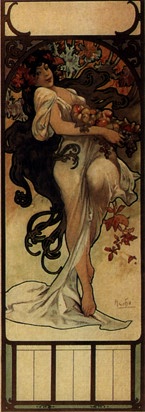
 Harris, Harris & Donahue Literary Agents http://harris-donahue.tripod.com |
Editors and copy editors require standard manuscript format to ensure that work can be easily read and edited. A properly formatted manuscript also allows editors to both estimate the word count and accurately determine how many pages will be required to produce a book using the page size, style, and type font of their choice.
MARGINS: 1.25 to 1.50 inch margins are preferred to allow room for editors and typesetters to make notes, but 1-inch margins are acceptable. Margins should be adjusted by the writer to provide an average of ten words to a full line.
TYPE FONT: Courier or a similar easy-to-read non-proportional type style is required. (Proportioned type, such as New Times Roman, will distort the word and page counts.) Courier is a standard monospaced type font, which is available on most computers when purchased, and is the standard on most typewriters.
TYPE SIZE: 12-point type on computer-generated manuscripts provides copy that is sufficiently large for easy reading. On a typewriter, use10 (pica) or 12 (elite) characters to the inch.
TYPE STYLE: Plain text is required. Words must not be italicized or shown in bold type. Underlining the text should indicate words that are to be set in italics in the book.
TEXT SPACING: All text should be double spaced, with no additional lines between paragraphs. Top and bottom margins must be set to allow for 25 lines of text to the page (not including the page header). The page header goes between the top edge of the page and the first line of text. Writers using Word or WordPerfect programs, should turn off the “widows and orphans” feature, and turn off any special feature which may group paragraphs or lines to prevent them from being split at page breaks. Those computer features will distort word counts.
ALIGNMENT: Text must not be “justified.” It should be "Flush Left," so the right margins remain "ragged" or uneven.
HYPHENATION: Words at the ends of lines must not be split and hyphenated. Many word processing programs automatically split words at the end of a line of text to produce lines of type that are even, but the preferences can be set to eliminate that feature.
SENTENCE SPACING: Put two spaces between sentences.
PARAGRAPH INDENTIONS: The initial word of each paragraph should be indented five spaces.
PAGE HEADERS/TOP MARGIN: A page header, consisting of the author’s surname, a slash and the title of the work, should be inserted at the top of each page, except the cover page, and should be flush left. The title should be shown in uppercase letters. Opposite the title, flush right but on the same line, the page number should be indicated.
Example:
| Mitchell/GONE WITH THE WND . . . . . . | Page 20 |
THE TEXT: The first line of text should begin at 1-inch to 1.5 inches from the top of the page, depending on what is necessary to obtain 25 lines of text.
CHAPTER HEADINGS: Each chapter is identified by a heading that is a line of type, centered, in uppercase, and placed one third of the way from the top edge of the page (3.5 inches from the top). Chapter numbers should be expressed in words, not numerals.
Example:
THE TITLE PAGE: The author's real name (not pen name) and address, telephone number and e-mail address should be shown in the upper left corner of the page. (Single-space the lines). Some writers add their social security numbers, but that is a sure sign of a non-professional.
There are differences of opinion about indicating the following, but some writers add a copyright notice in the upper right corner and include a word count. The information is optional, but included in the following example to show how it should be indicated if the author so chooses.
Example:
| Your real name | Copyright 2002 by |
| Your street address | Your real name |
| Your city, state and zip code | All rights reserved |
| Your telephone number | Word count |
The title should be centered, 5-1/2 inches below the top edge of the page, and should appear in uppercase letters. On the second line below the title, the word “by” should be inserted, followed by the author’s name on he fourth line. The name should be shown, as the author wants it to appear when published. A real name, or pseudonym may be used and my include initials or actual given name, and professional designation, such as M.D. or D.V.M., if appropriate.
Example:
by
Margaret Mitchell
If a literary agent represents the author, the contact information for that person should be indicated in the lower right hand corner of the page, and should be single-spaced.
Example:
Susan Donahue
Harris, Harris & Donahue Agency
1421 E Street
Lincoln, NE 68508
Phone: 402-742-6464
donahue@harris-donahue.com
NOTES ON WORD COUNTS: Writers should never use the word count feature of their computers to determine the number of words in a manuscript. The term “work count,” as used in the publishing industry, is actually inaccurate. Editors count pages, not words. Properly prepared manuscripts, with 25 lines of type to a page and an average of ten words to a line are assumed to contain 250 words on each full page. Partial pages, where the text covers half or less of the available space, are counted as 125 words for the publisher’s purposes, except for the first pages of chapters which are counted at full pages.
The following table is a guide to manuscript word count, based on pages, which is the standard used by editors:
| Page count | Word count |
|---|---|
| 1 page | 250 words |
| 100 pages | 25,000 words |
| 200 pages | 50,000 words |
| 300 pages | 75,000 words |
| 400 pages | 100,000 words |
| 500 pages | 125,000 words |



